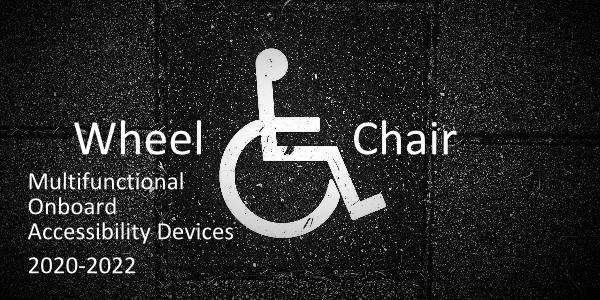WheelChair

The aim of WheelChair is to investigate whether and to what extent on-board wheelchairs for aircraft cabins can be better adapted to the needs of passengers and whether a guidance system can be established that makes it noticeably easier to guide both wheelchairs and for example, catering trolleys.
Client: bmk, TakeOff, Tender 2019
Duration: October 2020 to September 2022 (24 months)
Project partners: TU Vienna, Institute of Transport Sciences, FH JOANNEUM Graz, Raltec – Research Group for Assisted Living Technologies, Bucher Interiors GmbH
LOI partners: ÖBR – Österreichischer Behindertenrat, Club 81 – St.Pölten, equality, Caritas Sozialis – Multiple Sklerose-Tageszentrum, knack:punkt – selbstbestimmt Leben Salzburg, FACC, Safe-Runnway GesmbH
Project description: At an airport persons with walking disabilities are brought with their own wheelchairs to the gate and to the aircraft, where they are transferred to a “normal” aircraft seat. During the flight a so-called “on-board wheelchair” is available to take them to the toilet if necessary. On-board wheelchairs currently in use pose the following problems during use:
1) Persons must be transferred from the on-board wheelchair to a normal aircraft seat or vice versa before departure and after arrival. Each transfer process can be very painful, strenuous and due to the limited space available, cumbersome or require assistance.
2) Especially during the flight, pushing wheelchairs causes great difficulties for the cabin crew. The dimensions of the wheelchairs are adapted to the width of the aisles, which means that there is little room to manoeuvre laterally while pushing. Especially in turbulent flight situations, the wheelchair will continually touch the seat, which is uncomfortable for all persons concerned and can lead to dangerous situations.
3) As a rule, it is not possible to use the on-board wheelchair to go to the toilet. A complex transfer is required, which makes it very difficult or impossible for many people affected to use the toilet.
4) In the event of turbulence there is no vertical restraint, which can pose a danger regarding both wheelchair users and catering trolleys.
The aim of the WheelChair project is to design a bundle of measures which are based on a new multifunctional on-board wheelchair as well as a new type of guidance system in the aircraft floor that can also be used for other moving elements, such as catering trolleys in particular. The on-board wheelchair will include a seat shell that can be slid onto adapted aircraft seats, thus avoiding at least two transfers and in the case of in-flight use, multiple transfers. At the same time, the seat shell should make transfer significantly easier especially in barrier-free toilets or be designed in such a way that the entire seat shell can be pushed onto the toilet. The wheelchair itself must be foldable as easily as possible and at the same time as light as possible. The guidance system should allow stable longitudinal guidance throughout the aircraft and also provide vertical restraint so that both wheelchairs and, for example, catering trolleys can be guided safely.
The above considerations concerning the wheelchair and the guidance system can be seen as highly challenging with regard to development and possible implementation under the strict framework conditions of aviation. Therefore, the concrete aim of WheelChair as industrial research is to explore the implementation possibilities of various measures in a targeted manner before development.
Method: In the project, the requirements of affected persons will be extensively surveyed in the form of one-on-one interviews and workshops. Following a benchmark of the components relevant for WheelChair, the consortium will develop concepts for both the wheelchair and the guidance system. These concepts will be specifically evaluated in the consortium with the involvement of relevant experts from the point of view of technical and legal feasibility. In order to be able to clarify the actual benefits for the travellers concerned, a greatly simplified test wheelchair and a suitable guidance system will be built as a mock-up. These concepts do not yet meet the requirements of aviation, but in a first step they will make it possible to check whether the requirements of potential users can actually be met.-
The result of WheelChair will be a clear statement as to whether a multifunctional on-board wheelchair including a universally applicable guidance system can be realised at all and what such a system must look like from the point of view of the persons concerned and the airlines.
The added value of WheelChair in the first stage as a research project is clear knowledge of whether and in what form the planned measures can be developed and realised in concrete terms. These findings can then be followed by efficient development. If successful, the knowledge and design proposals gained for aviation can be expected to lead to spin-off products in other areas (e.g. passenger care).
Contact: DI Dr. Bernhard Rüger
